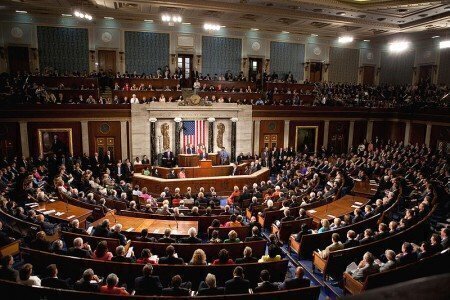One of the most important, but least discussed, constitutional amendments made government more responsive by greatly shortening the time outgoing elected officials have a role in passing laws.
A “lame-duck session” happens when Congress meets after an election, when these outgoing members still have voting powers to approve laws, and in the case of the Senate, approve nominees from the Executive Branch.
The Congressional Research Service traces the phrase “lame duck” to the British during the Colonial era, when it was used to describe businessmen who had financial troubles and who resembled wounded game birds. In the 1830s, “lame duck” started to be used to describe American politicians had lost an election, or decided not to run for re-election, but still held office for a brief period.
Today, the session period usually lasts from mid-November to the Christmas period in election years, but it can extend to January 2nd of the following year. On the following day, January 3, a new session begins and every other year it contains new members of Congress.
But before the 20th Amendment to the Constitution, which was ratified on January 23, 1933 and took effect in 1935, lame-duck sessions were considerably different.
Congressional elections were held in November, as they are today. But Congress resumed on the first Monday in December, and a new Congress began on March 4th of odd-numbered years.
This guaranteed that the last session of a Congress would be a lame-duck session that lasted from December 1st until March 4th. The session’s length didn’t allow Congress to conduct meaningful business on financial matters, but it left politicians in place that weren’t accountable to voters for a few extra months.
The 20th Amendment shortened this period. Section 2 said that, “the Congress shall assemble at least once in every year, and such meeting shall begin at noon on the 3rd day of January, unless they shall by law appoint a different day.” The terms of newly elected Senators and Representatives started on the same day.
This amendment also shortened the period between a President’s election and inaugural, and it also fixed the problem of an outgoing, lame-duck House of Representatives choosing a President if an election went to the House due to a lack of a majority vote in the Electoral College.
In the post-20th Amendment world, condensed lame-duck sessions haven’t lacked drama. In 1940, Congress met to decide how to address the threat of World War II. In 1950, Chinese troops entered the Korean War during a lame-duck session and Congress debated the use of nuclear weapons in the conflict. Four years later, the Senate met in a lame-duck session to consider censuring Senator Joseph McCarthy.
In 1974, Congress approved the nomination of Nelson Rockefeller as Vice President during a lame-duck session. After Ronald Reagan’s victory in 1980, the lame-duck Congress found a way in a bipartisan manner to pass budget resolutions that were delayed during the election year. And in 1998, a Republican-controlled House approved articles of impeachment against President Bill Clinton.
Another important aspect of the 20th Amendment was shortening the lame-duck periods for presidents-elect. The 20th Amendment moved the inauguration date of the new president-elect from March 4th to January 20th—a move that could have had significant effect on the course of American history had it been done sooner.
For example, after his November 1860 election as President, Abraham Lincoln was powerless to act on the secession of southern states from the Union. Seven states left the Union as the lame-duck President, James Buchanan, did little to please the secessionist states and the rest of the Union.
By the time Lincoln assumed office in March 1861, the secessionist states had formed their own government, and the course was set for the Civil War.








